Features
The Winter Adventure In 16 Countries – Part B
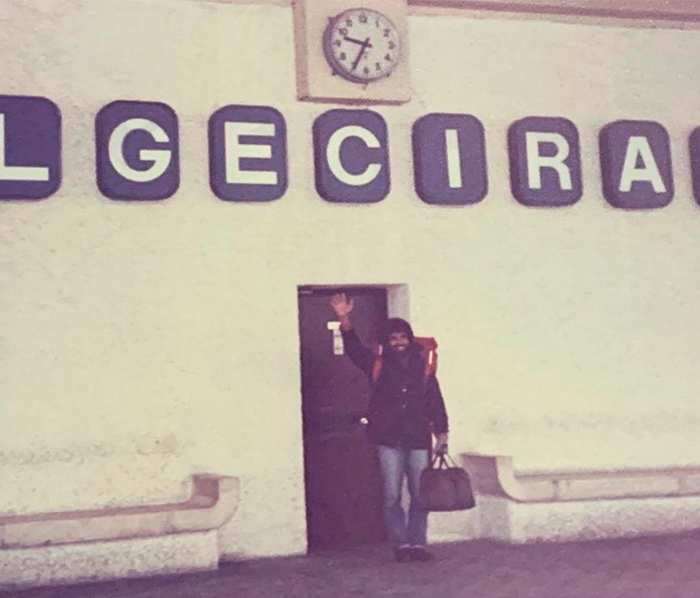
CONFESSIONS OF A GLOBAL GYPSY
By Dr. Chandana (Chandi) Jayawardena DPhil
President – Chandi J. Associates Inc. Consulting, Canada
Founder & Administrator – Global Hospitality Forum
chandij@sympatico.ca
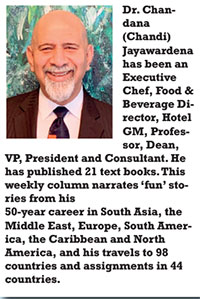 Continuing from Wales, Ireland, a 24-hour voyage, quick visits to three French cities…
Continuing from Wales, Ireland, a 24-hour voyage, quick visits to three French cities…
FRANCE
We left Paris just before midnight in a train to Bordeaux. Due to the bad winter weather, the train was late by an hour. We could not get any sleep in the freezing compartments. There was no running water in the washrooms as the taps were frozen. After moving from compartment to compartment, finally around 3:00 am, we found a relatively warmer place to get a few hours of sleep.
Bordeaux
We reached our destination for the day around 7:00 am. Having recently completed the Higher Certificate program in Wines and Spirits at the world headquarters of the Wine and Spirit Education Trust (WSET) in London, I was particularly pleased to be in Bordeaux. It is the hub of a famed wine-growing region in the world. As the taps in the station were also frozen, we were compelled to have an expensive, quick wash with a few bottles of Perrier Sparkling Water. After leaving our backpacks in a locker and having a quick breakfast at a café near the railway station, we commenced a day of exploration of a very interesting city.

Bordeaux is a port city on the Garonne River in southwestern France. Apart from some of the best-known wines, it is known for its Gothic Cathédrale Saint-André, 18th century mansions and notable art museums such as the Musée des Beaux-Arts de Bordeaux. With around 650,000 residents, Bordeaux was the sixth-most populated city in France after Paris, Lyon, Marseille, Lille, and Toulouse.
Bordeaux is home to the world’s main wine fair, Vinexpo. Bordeaux is also one of the French centres of gastronomy and business tourism for the organization of international congresses. Bordeaux is an international tourist destination for its architectural and cultural heritage with more than 350 historic monuments making it, after Paris, the city with the most listed or registered monuments in France.
We then boarded a crowded train for a 30-hour ride from Bordeaux to Porto in Portugal travelling right across Spain. Due to high demand for sleeping berths, with some difficulty we managed to obtain two sleepers in a car occupied by an old Portuguese couple travelling with their little granddaughter. They were very kind and hospitable. They shared their snack dinner with us. Pão com chouriço (yeasted dough rolls that are filled with the famous pork sausage known as chouriço) were delicious. We shared our bottle of sweet Madeira fortified wine with them.
Up to the time we crossed the French-Spanish border passing a Spanish railway station in a small city, Irun, our train was punctual. After that we experienced several long stops and delays. As we were very tired, we went to sleep soon after sunset and got up long after sunrise to find that the winter storm had continued. The scenery was diverse and breathtakingly beautiful. Unfortunately, we were not comfortable as all the taps were frozen and the train toilets were not functioning. We eventually reached the Spanish-Portuguese border near a small city, Fuentes de Oñoro and finally reached Porto, after a six-hour delay.
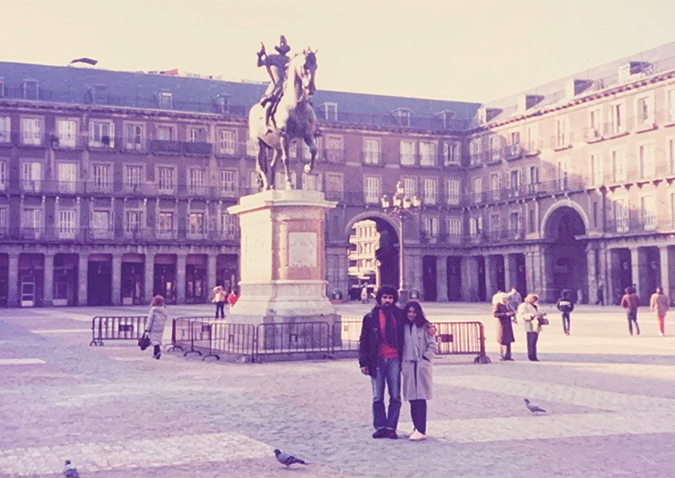
PORTUGAL
Portugal is a country whose mainland is located on the Iberian Peninsula of Southwestern Europe, and whose territory also includes the Atlantic archipelagos of the Azores and Madeira. It features the westernmost point in continental Europe. Its Iberian portion is bordered to the west and south by the Atlantic Ocean and to the north and east by Spain, the sole country to have a 1,232 km long land border with Portugal. Its territory had been continuously settled, invaded and fought over since prehistoric times. It was inhabited by Ancient Greek traders, the Romans, Germanic peoples, the Moors, among others.
In the 15th and 16th centuries, Portugal established the first, global maritime and commercial empire, becoming one of the world’s major economic, political and military powers. During this period, today referred to as the Age of Discovery, Portuguese explorers pioneered maritime exploration with the discovery of what would become Brazil. Portugal acquired great riches by exploiting the trade in spices, slaves, sugar, textiles and other goods.
Arriving in Portugal, I thought of the many influences (culture, customs, cuisine, words, religion and names) of the Portuguese in Sri Lanka through a period of around 150 years. The first Europeans to visit Sri Lanka in modern times were the Portuguese in 1505. The Portuguese built a fort in the port city of Colombo in 1517 and gradually extended their control over the coastal areas of the island.
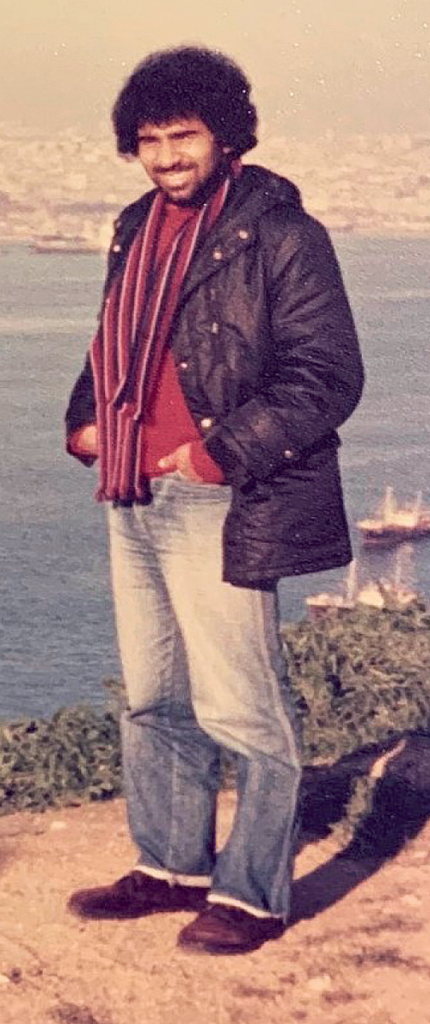
In Sri Lanka, the Portuguese used incentives, as well as brutal methods of terrorising residents to force them to change religions, culture and names. Many modern Sri Lankan names can be traced from the Portuguese, and 6% of the population of Sri Lanka today, are Catholics. Many friends I grew up with, have Portuguese family names such as Perera, Fernando, Mendis, De Silva, De Alwis, De Almeida, etc. Resulting from a treaty the King of Kandy made with the Dutch, the Portuguese invaders were gradually eliminated by 1658.
Portugal has left a profound cultural, architectural and linguistic influence across the globe, with a legacy of around 250 million Portuguese speakers around the world. It is the ninth most spoken language in the world. Indian troops invading Portuguese occupied Goa in 1961 and the handover of Macau to China in 1999 marked the end of what can be considered one of the longest colonial empires in history. I wondered how a relatively small country with a small population made such an impact around the world.
Three 20th century revolutions in 1910, 1927 and 1974 have shaped modern-day Portugal. The first, the October 5, 1910 revolution, brought an end to the Portuguese monarchy and established the highly unstable and corrupt Portuguese First Republic. In 1985, Portugal had just reached a population milestone of 10 million. Out of that national total, over 25% lived in the capital, Lisbon and over 10% lived in the second city, Porto.
Porto
On entering Porto, we were impressed with a massive bridge over The Douro, the highest-flow river of the Iberian Peninsula, where it flows to the Atlantic Ocean at Porto. It is a beautiful view. Porto is a coastal city in north west Portugal known for its stately bridges and port wine production.
We found a room for the night in an old hotel for only £5 and walked in the medieval riverside district founded in the 12th century. The narrow-cobbled streets, merchants’ houses and small cafés were all very quaint. The next day we did a three-hour city tour by bus. Before catching a train to Madrid, I told my wife, “Our friends were correct. A short visit to a city like Porto is not enough. We must return here for at least a week to further explore the region.”
Twenty years later, I returned to Porto, as an invitee of the National Portuguese Hotel Association. I was very happy to get that opportunity in 2005, to spend a week in this beautiful city and taste varieties of the best Port Wine and do many tours of the region. I delivered a keynote address on the topic, ‘Branding of Hotels’ at the XIX National Congress on Hotel and Tourism Industry.
I am seated in the middle of the stage before my keynote address in Porto in 2005
Lisbon
Most of the Portuguese expeditions of the Age of Discovery departed from Lisbon during the period from the end of the 15th century to the beginning of the 17th century, including Vasco da Gama’s expedition to India in 1498. The following years of the 16th century started off Lisbon’s golden era: the city was the European hub of commerce between Africa, India, the Far East and later, Brazil.
The express train from Porto took only three and half hours to arrive in Lisbon. Portugal’s hilly, coastal capital city was very impressive. We enjoyed a three-hour city tour by bus, which covered the imposing São Jorge Castle, de Abril suspension bridge and the National Azulejo Museum. We also visited the 16th-century monuments, Belém Tower and Jerónimos Monastery, which were declared UNESCO World Heritage Sites in later years. Just outside Lisbon is a series of Atlantic beaches, from Cascais to Estoril. After the tour we had a long walk in the city centre, and watched a beautiful sunset.
We boarded a night train from Lisbon to the Spanish capital, Madrid. In out compartment, we chatted with a few young Australian travellers. They were travelling like hippies for a year in between their university studies. They were friendly and we shared some common adventurous attitudes about world travel. I taught them to play the popular South Asian card game, 304. We played several rounds of this game, until it was bed time.
SPAIN
Although we travelled from France to Portugal, right across Spain, we did not detrain in any Spanish railway station. This was our first visit to this historically significant country. We planned to see the two main cities of Spain, Madrid and Barcelona, and a couple of smaller cities en route. Compared to Portugal, Spain was much larger. In 1985, it had a population of 38 million.
We were excited to visit Spain as Spanish art, music, literature and cuisine have been influential worldwide, particularly in Western Europe and the Americas. As a reflection of its large cultural wealth, today Spain has the world’s fourth-largest number of World Heritage Sites (49) and is the world’s second-most visited country. Its cultural influence extends over 570 million Hispanophones, making Spanish the world’s second-most spoken native language.
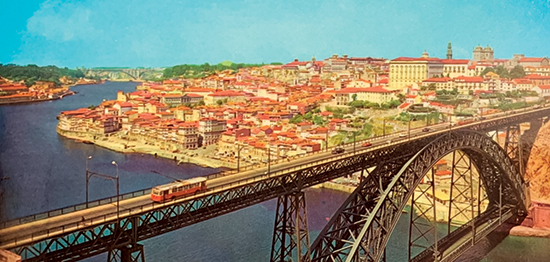
Madrid
We reached Madrid by mid-morning. In 1985, Madrid had a population of 4.5 million. Up to that point of our six-week trip, Madrid was the second largest city we visited, after Paris. Our plan was to spend the full-day in Madrid and catch another night train to our next destination. Unfortunately, the luggage storage facility in the train station was full, so we had to carry our bags with us during our tours.
In Madrid we did a long city tour and visited many key attractions, including Gran Vía (the main tourist and shopping artery in the centre of the capital), the Royal Palace, the Prado Museum, and Plaza Mayor, which was considered the iconic spot in the heart of the city’s historic district. We also visited the largest university in Madrid, La Universidad Complutense de Madrid. It had over 80,000 students, including many from other Spanish-speaking countries, who were on scholarships.
The heating in the next night train was not very effective. Now experienced winter train travellers, we were quick to move from compartment to compartment until we found a relatively warmer place for a good night sleep. As we travelled closer to the southern tip of Spain, Algeciras, the weather became a little warmer.
Ship from Algeciras to Africa
Our voyage from Algeciras in Spain to Africa took less than four hours. We met three university students on the ship, and had lunch together. Robert and Fritz were from West Germany, and were travelling with their Moroccan university mate, Kalik, who had invited his friends to his family home in Casablanca.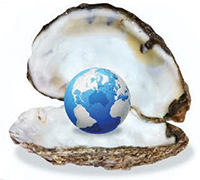
Our plan was simply to visit the port city, Tangier in Morocco for the day and then take a ship back to Spain. After some persuasion by our new friends, we changed our plan. In London, my wife and I had recently seen the 1942 movie classic ‘Casablanca’, and loved its famous song, ‘As Time Goes By’, played on the piano by a character in the movie, Sam.
Stealing a line from the movie, I said to my wife playfully, ‘Play it again, Sam!”. We then decided to extend our trip to Morocco by going to its commercial capital, Casablanca.
Will continue in next week’s article:THE WINTER ADVENTURE IN 16 COUNTRIES – Part “C”,
with adventures in Morocco, Spain, and France …
Features
The heart-friendly health minister

by Dr Gotabhya Ranasinghe
Senior Consultant Cardiologist
National Hospital Sri Lanka
When we sought a meeting with Hon Dr. Ramesh Pathirana, Minister of Health, he graciously cleared his busy schedule to accommodate us. Renowned for his attentive listening and deep understanding, Minister Pathirana is dedicated to advancing the health sector. His openness and transparency exemplify the qualities of an exemplary politician and minister.
Dr. Palitha Mahipala, the current Health Secretary, demonstrates both commendable enthusiasm and unwavering support. This combination of attributes makes him a highly compatible colleague for the esteemed Minister of Health.
Our discussion centered on a project that has been in the works for the past 30 years, one that no other minister had managed to advance.
Minister Pathirana, however, recognized the project’s significance and its potential to revolutionize care for heart patients.
The project involves the construction of a state-of-the-art facility at the premises of the National Hospital Colombo. The project’s location within the premises of the National Hospital underscores its importance and relevance to the healthcare infrastructure of the nation.
This facility will include a cardiology building and a tertiary care center, equipped with the latest technology to handle and treat all types of heart-related conditions and surgeries.
Securing funding was a major milestone for this initiative. Minister Pathirana successfully obtained approval for a $40 billion loan from the Asian Development Bank. With the funding in place, the foundation stone is scheduled to be laid in September this year, and construction will begin in January 2025.
This project guarantees a consistent and uninterrupted supply of stents and related medications for heart patients. As a result, patients will have timely access to essential medical supplies during their treatment and recovery. By securing these critical resources, the project aims to enhance patient outcomes, minimize treatment delays, and maintain the highest standards of cardiac care.
Upon its fruition, this monumental building will serve as a beacon of hope and healing, symbolizing the unwavering dedication to improving patient outcomes and fostering a healthier society.We anticipate a future marked by significant progress and positive outcomes in Sri Lanka’s cardiovascular treatment landscape within the foreseeable timeframe.
Features
A LOVING TRIBUTE TO JESUIT FR. ALOYSIUS PIERIS ON HIS 90th BIRTHDAY

by Fr. Emmanuel Fernando, OMI
Jesuit Fr. Aloysius Pieris (affectionately called Fr. Aloy) celebrated his 90th birthday on April 9, 2024 and I, as the editor of our Oblate Journal, THE MISSIONARY OBLATE had gone to press by that time. Immediately I decided to publish an article, appreciating the untiring selfless services he continues to offer for inter-Faith dialogue, the renewal of the Catholic Church, his concern for the poor and the suffering Sri Lankan masses and to me, the present writer.
It was in 1988, when I was appointed Director of the Oblate Scholastics at Ampitiya by the then Oblate Provincial Fr. Anselm Silva, that I came to know Fr. Aloy more closely. Knowing well his expertise in matters spiritual, theological, Indological and pastoral, and with the collaborative spirit of my companion-formators, our Oblate Scholastics were sent to Tulana, the Research and Encounter Centre, Kelaniya, of which he is the Founder-Director, for ‘exposure-programmes’ on matters spiritual, biblical, theological and pastoral. Some of these dimensions according to my view and that of my companion-formators, were not available at the National Seminary, Ampitiya.
Ever since that time, our Oblate formators/ accompaniers at the Oblate Scholasticate, Ampitiya , have continued to send our Oblate Scholastics to Tulana Centre for deepening their insights and convictions regarding matters needed to serve the people in today’s context. Fr. Aloy also had tried very enthusiastically with the Oblate team headed by Frs. Oswald Firth and Clement Waidyasekara to begin a Theologate, directed by the Religious Congregations in Sri Lanka, for the contextual formation/ accompaniment of their members. It should very well be a desired goal of the Leaders / Provincials of the Religious Congregations.
Besides being a formator/accompanier at the Oblate Scholasticate, I was entrusted also with the task of editing and publishing our Oblate journal, ‘The Missionary Oblate’. To maintain the quality of the journal I continue to depend on Fr. Aloy for his thought-provoking and stimulating articles on Biblical Spirituality, Biblical Theology and Ecclesiology. I am very grateful to him for his generous assistance. Of late, his writings on renewal of the Church, initiated by Pope St. John XX111 and continued by Pope Francis through the Synodal path, published in our Oblate journal, enable our readers to focus their attention also on the needed renewal in the Catholic Church in Sri Lanka. Fr. Aloy appreciated very much the Synodal path adopted by the Jesuit Pope Francis for the renewal of the Church, rooted very much on prayerful discernment. In my Religious and presbyteral life, Fr.Aloy continues to be my spiritual animator / guide and ongoing formator / acccompanier.
Fr. Aloysius Pieris, BA Hons (Lond), LPh (SHC, India), STL (PFT, Naples), PhD (SLU/VC), ThD (Tilburg), D.Ltt (KU), has been one of the eminent Asian theologians well recognized internationally and one who has lectured and held visiting chairs in many universities both in the West and in the East. Many members of Religious Congregations from Asian countries have benefited from his lectures and guidance in the East Asian Pastoral Institute (EAPI) in Manila, Philippines. He had been a Theologian consulted by the Federation of Asian Bishops’ Conferences for many years. During his professorship at the Gregorian University in Rome, he was called to be a member of a special group of advisers on other religions consulted by Pope Paul VI.
Fr. Aloy is the author of more than 30 books and well over 500 Research Papers. Some of his books and articles have been translated and published in several countries. Among those books, one can find the following: 1) The Genesis of an Asian Theology of Liberation (An Autobiographical Excursus on the Art of Theologising in Asia, 2) An Asian Theology of Liberation, 3) Providential Timeliness of Vatican 11 (a long-overdue halt to a scandalous millennium, 4) Give Vatican 11 a chance, 5) Leadership in the Church, 6) Relishing our faith in working for justice (Themes for study and discussion), 7) A Message meant mainly, not exclusively for Jesuits (Background information necessary for helping Francis renew the Church), 8) Lent in Lanka (Reflections and Resolutions, 9) Love meets wisdom (A Christian Experience of Buddhism, 10) Fire and Water 11) God’s Reign for God’s poor, 12) Our Unhiddden Agenda (How we Jesuits work, pray and form our men). He is also the Editor of two journals, Vagdevi, Journal of Religious Reflection and Dialogue, New Series.
Fr. Aloy has a BA in Pali and Sanskrit from the University of London and a Ph.D in Buddhist Philosophy from the University of Sri Lankan, Vidyodaya Campus. On Nov. 23, 2019, he was awarded the prestigious honorary Doctorate of Literature (D.Litt) by the Chancellor of the University of Kelaniya, the Most Venerable Welamitiyawe Dharmakirthi Sri Kusala Dhamma Thera.
Fr. Aloy continues to be a promoter of Gospel values and virtues. Justice as a constitutive dimension of love and social concern for the downtrodden masses are very much noted in his life and work. He had very much appreciated the commitment of the late Fr. Joseph (Joe) Fernando, the National Director of the Social and Economic Centre (SEDEC) for the poor.
In Sri Lanka, a few religious Congregations – the Good Shepherd Sisters, the Christian Brothers, the Marist Brothers and the Oblates – have invited him to animate their members especially during their Provincial Congresses, Chapters and International Conferences. The mainline Christian Churches also have sought his advice and followed his seminars. I, for one, regret very much, that the Sri Lankan authorities of the Catholic Church –today’s Hierarchy—- have not sought Fr.
Aloy’s expertise for the renewal of the Catholic Church in Sri Lanka and thus have not benefited from the immense store of wisdom and insight that he can offer to our local Church while the Sri Lankan bishops who governed the Catholic church in the immediate aftermath of the Second Vatican Council (Edmund Fernando OMI, Anthony de Saram, Leo Nanayakkara OSB, Frank Marcus Fernando, Paul Perera,) visited him and consulted him on many matters. Among the Tamil Bishops, Bishop Rayappu Joseph was keeping close contact with him and Bishop J. Deogupillai hosted him and his team visiting him after the horrible Black July massacre of Tamils.
Features
A fairy tale, success or debacle

Sri Lanka-Singapore Free Trade Agreement
By Gomi Senadhira
senadhiragomi@gmail.com
“You might tell fairy tales, but the progress of a country cannot be achieved through such narratives. A country cannot be developed by making false promises. The country moved backward because of the electoral promises made by political parties throughout time. We have witnessed that the ultimate result of this is the country becoming bankrupt. Unfortunately, many segments of the population have not come to realize this yet.” – President Ranil Wickremesinghe, 2024 Budget speech
Any Sri Lankan would agree with the above words of President Wickremesinghe on the false promises our politicians and officials make and the fairy tales they narrate which bankrupted this country. So, to understand this, let’s look at one such fairy tale with lots of false promises; Ranil Wickremesinghe’s greatest achievement in the area of international trade and investment promotion during the Yahapalana period, Sri Lanka-Singapore Free Trade Agreement (SLSFTA).
It is appropriate and timely to do it now as Finance Minister Wickremesinghe has just presented to parliament a bill on the National Policy on Economic Transformation which includes the establishment of an Office for International Trade and the Sri Lanka Institute of Economics and International Trade.
Was SLSFTA a “Cleverly negotiated Free Trade Agreement” as stated by the (former) Minister of Development Strategies and International Trade Malik Samarawickrama during the Parliamentary Debate on the SLSFTA in July 2018, or a colossal blunder covered up with lies, false promises, and fairy tales? After SLSFTA was signed there were a number of fairy tales published on this agreement by the Ministry of Development Strategies and International, Institute of Policy Studies, and others.
However, for this article, I would like to limit my comments to the speech by Minister Samarawickrama during the Parliamentary Debate, and the two most important areas in the agreement which were covered up with lies, fairy tales, and false promises, namely: revenue loss for Sri Lanka and Investment from Singapore. On the other important area, “Waste products dumping” I do not want to comment here as I have written extensively on the issue.
1. The revenue loss
During the Parliamentary Debate in July 2018, Minister Samarawickrama stated “…. let me reiterate that this FTA with Singapore has been very cleverly negotiated by us…. The liberalisation programme under this FTA has been carefully designed to have the least impact on domestic industry and revenue collection. We have included all revenue sensitive items in the negative list of items which will not be subject to removal of tariff. Therefore, 97.8% revenue from Customs duty is protected. Our tariff liberalisation will take place over a period of 12-15 years! In fact, the revenue earned through tariffs on goods imported from Singapore last year was Rs. 35 billion.
The revenue loss for over the next 15 years due to the FTA is only Rs. 733 million– which when annualised, on average, is just Rs. 51 million. That is just 0.14% per year! So anyone who claims the Singapore FTA causes revenue loss to the Government cannot do basic arithmetic! Mr. Speaker, in conclusion, I call on my fellow members of this House – don’t mislead the public with baseless criticism that is not grounded in facts. Don’t look at petty politics and use these issues for your own political survival.”
I was surprised to read the minister’s speech because an article published in January 2018 in “The Straits Times“, based on information released by the Singaporean Negotiators stated, “…. With the FTA, tariff savings for Singapore exports are estimated to hit $10 million annually“.
As the annual tariff savings (that is the revenue loss for Sri Lanka) calculated by the Singaporean Negotiators, Singaporean $ 10 million (Sri Lankan rupees 1,200 million in 2018) was way above the rupees’ 733 million revenue loss for 15 years estimated by the Sri Lankan negotiators, it was clear to any observer that one of the parties to the agreement had not done the basic arithmetic!
Six years later, according to a report published by “The Morning” newspaper, speaking at the Committee on Public Finance (COPF) on 7th May 2024, Mr Samarawickrama’s chief trade negotiator K.J. Weerasinghehad had admitted “…. that forecasted revenue loss for the Government of Sri Lanka through the Singapore FTA is Rs. 450 million in 2023 and Rs. 1.3 billion in 2024.”
If these numbers are correct, as tariff liberalisation under the SLSFTA has just started, we will pass Rs 2 billion very soon. Then, the question is how Sri Lanka’s trade negotiators made such a colossal blunder. Didn’t they do their basic arithmetic? If they didn’t know how to do basic arithmetic they should have at least done their basic readings. For example, the headline of the article published in The Straits Times in January 2018 was “Singapore, Sri Lanka sign FTA, annual savings of $10m expected”.
Anyway, as Sri Lanka’s chief negotiator reiterated at the COPF meeting that “…. since 99% of the tariffs in Singapore have zero rates of duty, Sri Lanka has agreed on 80% tariff liberalisation over a period of 15 years while expecting Singapore investments to address the imbalance in trade,” let’s turn towards investment.
Investment from Singapore
In July 2018, speaking during the Parliamentary Debate on the FTA this is what Minister Malik Samarawickrama stated on investment from Singapore, “Already, thanks to this FTA, in just the past two-and-a-half months since the agreement came into effect we have received a proposal from Singapore for investment amounting to $ 14.8 billion in an oil refinery for export of petroleum products. In addition, we have proposals for a steel manufacturing plant for exports ($ 1 billion investment), flour milling plant ($ 50 million), sugar refinery ($ 200 million). This adds up to more than $ 16.05 billion in the pipeline on these projects alone.
And all of these projects will create thousands of more jobs for our people. In principle approval has already been granted by the BOI and the investors are awaiting the release of land the environmental approvals to commence the project.
I request the Opposition and those with vested interests to change their narrow-minded thinking and join us to develop our country. We must always look at what is best for the whole community, not just the few who may oppose. We owe it to our people to courageously take decisions that will change their lives for the better.”
According to the media report I quoted earlier, speaking at the Committee on Public Finance (COPF) Chief Negotiator Weerasinghe has admitted that Sri Lanka was not happy with overall Singapore investments that have come in the past few years in return for the trade liberalisation under the Singapore-Sri Lanka Free Trade Agreement. He has added that between 2021 and 2023 the total investment from Singapore had been around $162 million!
What happened to those projects worth $16 billion negotiated, thanks to the SLSFTA, in just the two-and-a-half months after the agreement came into effect and approved by the BOI? I do not know about the steel manufacturing plant for exports ($ 1 billion investment), flour milling plant ($ 50 million) and sugar refinery ($ 200 million).
However, story of the multibillion-dollar investment in the Petroleum Refinery unfolded in a manner that would qualify it as the best fairy tale with false promises presented by our politicians and the officials, prior to 2019 elections.
Though many Sri Lankans got to know, through the media which repeatedly highlighted a plethora of issues surrounding the project and the questionable credentials of the Singaporean investor, the construction work on the Mirrijiwela Oil Refinery along with the cement factory began on the24th of March 2019 with a bang and Minister Ranil Wickremesinghe and his ministers along with the foreign and local dignitaries laid the foundation stones.
That was few months before the 2019 Presidential elections. Inaugurating the construction work Prime Minister Ranil Wickremesinghe said the projects will create thousands of job opportunities in the area and surrounding districts.
The oil refinery, which was to be built over 200 acres of land, with the capacity to refine 200,000 barrels of crude oil per day, was to generate US$7 billion of exports and create 1,500 direct and 3,000 indirect jobs. The construction of the refinery was to be completed in 44 months. Four years later, in August 2023 the Cabinet of Ministers approved the proposal presented by President Ranil Wickremesinghe to cancel the agreement with the investors of the refinery as the project has not been implemented! Can they explain to the country how much money was wasted to produce that fairy tale?
It is obvious that the President, ministers, and officials had made huge blunders and had deliberately misled the public and the parliament on the revenue loss and potential investment from SLSFTA with fairy tales and false promises.
As the president himself said, a country cannot be developed by making false promises or with fairy tales and these false promises and fairy tales had bankrupted the country. “Unfortunately, many segments of the population have not come to realize this yet”.
(The writer, a specialist and an activist on trade and development issues . )












